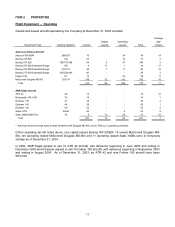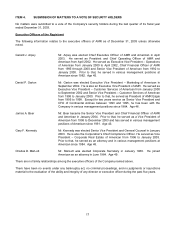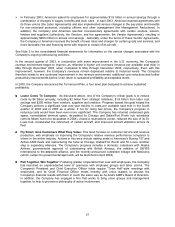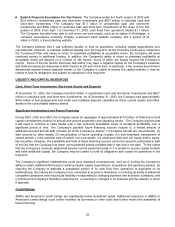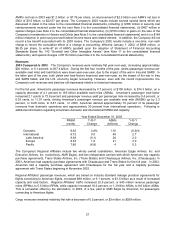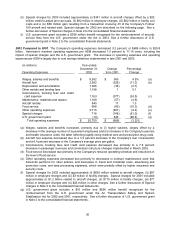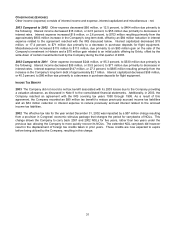American Airlines 2003 Annual Report Download - page 23
Download and view the complete annual report
Please find page 23 of the 2003 American Airlines annual report below. You can navigate through the pages in the report by either clicking on the pages listed below, or by using the keyword search tool below to find specific information within the annual report.21
• In February 2003, American asked its employees for approximately $1.8 billion in annual savings through a
combination of changes in wages, benefits and work rules. In April 2003, American reached agreements with
its three unions (the Labor Agreements) and also implemented various changes in the pay plans and benefits
for non-unionized personnel, including officers and other management (the Management Reductions). In
addition, the Company and American reached concessionary agreements with certain vendors, lessors,
lenders and suppliers (collectively, the Vendors, and the agreements, the Vendor Agreements), resulting in
approximately $200 million in annual cost savings. Generally, under the terms of these Vendor Agreements,
the Company or American receives the benefit of lower rates and charges for certain goods and services, and
more favorable rent and financing terms with respect to certain of its aircraft.
See Note 2 to the consolidated financial statements for information on the special charges associated with the
Company’s ongoing restructuring activities.
In the second quarter of 2003, in conjunction with some improvement in the U.S. economy, the Company’s
revenue environment began to improve, as reflected in higher unit revenues (revenue per available seat mile) in
May through December 2003, when compared to May through December 2002, respectively. Even with this
improvement, however, the Company’s revenues remain depressed relative to historical levels. The Company
therefore needs to see continued improvement in the revenue environment, additional cost reductions and further
productivity improvements before it can return to sustained profitability at acceptable levels.
In 2003, the Company announced the Turnaround Plan, a four tenet plan designed to achieve sustained
profitability.
•
••
• Lower Costs To Compete: As discussed above, one of the Company’s critical goals is to reduce
costs by $4 billion annually, including $2 billion from strategic initiatives, $1.8 billion from labor cost
savings and $200 million from vendors, suppliers and creditors. Progress toward this goal helped the
Company achieve a significant year-over-year decline in costs per available seat mile in the fourth
quarter of 2003 and in 2003 as a whole. If not for rising fuel prices, the Company’s progress in
reducing costs would have been even more significant. The Company has returned underused gate
space, consolidated terminal space, de-peaked its Chicago and Dallas/Fort Worth hub schedules
(with its Miami hub to be de-peaked in 2004), closed a reservations center, reduced the size of its St.
Louis hub, accelerated the retirement of certain aircraft, and improved aircraft utilization across its
fleet.
•
••
• Fly Smart, Give Customers What They Value: This tenet focuses on customer service and revenue
production, with emphasis on improving the Company’s relative revenue performance compared to
others in the airline industry. Actions in this area include adding seats to American’s Boeing 757 and
Airbus A300 fleets and restructuring the hubs at Chicago, Dallas/Fort Worth and St. Louis. Another
step is expanding alliances. The Company’s progress includes a domestic codeshare with Alaska
Airlines, governmental approval of codesharing with British Airways, the addition of SWISS
International to the oneworld alliance, and the recently announced codeshare linkage with Mexicana
(which, subject to governmental approvals, will be launched in April 2004).
•
••
• Pull Together, Win Together: Fostering greater cooperation than ever with employees, the Company
has launched an unprecedented level of openness with employee groups and labor unions. The
Company’s President and Chief Executive Officer holds regular “Town Hall”-style meetings with
employees, and its Chief Financial Officer meets monthly with union leaders to discuss the
Company’s financial results with them in much the same way as he briefs AMR’s Board of Directors.
In addition, the Company has engaged a firm that works to bring union groups and management
together, to help to promote a philosophy of active involvement.


